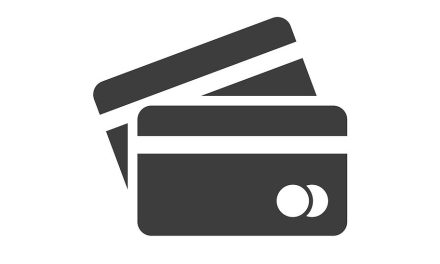By Dan Brownell
Evolve with BOPIS to Maximize Profits
Consumer behavior changed drastically during the pandemic lockdowns, bringing new habits that many customers don’t want to shake, such as BOPIS, or Buy Online, Pick Up in Store. (For chain retailers, however, this now often translates into buying online and picking up curbside). A February 2022 report by Shopify revealed that 64% of consumers now look for BOPIS as a shopping option.
While the social distancing rules responsible for BOPIS have largely been dropped, the demand for BOPIS is still growing and evolving. BOPIS was instituted early in the pandemic to overcome the obstacles of lockdowns and social distancing. During that frantic time, the most pressing goal was to make up for lost conventional sales. However, as the BOPIS process was refined, sales returned, and retail panic subsided, big businesses had time to start looking for new opportunities to monetize the new sales model. They’ve done so, creating additional revenue because they didn’t stop at the basic model. Small, independent stores would be wise to continue evolving their BOPIS model as well to maximize its benefits. Following are ways that BOPIS can be used to expand sales and marketing opportunities.
Boost Sales of In-Store Inventory
When customers enter stores to pick up inventory they’ve purchased online, they’re exposed to more products. If the BOPIS pickup is placed at the back of the store, customers will see more merchandise as they walk the aisles than if the pickup is at the front of the store. Of course, each store has to weigh the pros and cons because some customers may not like the extra distance and time that takes. But even if pickup is up front, stores can still make a concerted effort to display impulse items that will increase sales.
Expand In-Store Pickup to Curbside Pickup
It’s nearly impossible to visit a big box store without dedicated parking spots to support the growing trend of BOPIS. With employees being made available to run outside to bring purchases to cars versus customers having to go into stores, BOPIS caters to the fast-paced life that many customers have.
While having a dedicated area in the store for orders to be picked up is ideal, the added bonus of bringing orders to cars directly is an elevated level of customer care that many consumers enjoy. As a result, they’ll be more likely to return to your website for future orders thanks to this heightened level of convenience in their collective shopping journey.
Leverage Returns for Additional Opportunities to Sell
Even a BOPIS return can be used as a sales opportunity. If the product was the wrong color, size, etc., a savvy salesperson can try to fix the problem by offering an exchange, or even suggest an entirely different product that might better meet the customer’s needs. And then, of course, there’s always the chance that the shopper will spot something else they want while they’re in the store.
Support Digital Marketing Efforts
Offering a BOPIS service gives stores a great reason to expand their digital marketing efforts, such as through emails, texts, and social media. If customers want the convenience of BOPIS, then you’ve given them an incentive to provide their email address or phone number and to follow you on social media. Shoppers are reluctant to provide contact information unless they have a good reason to. But once you’ve added them to your email list with their permission, you can let them know of special sales, discounts, events, and more. This creates a circular marketing process. For instance, if a customer sees a sale item advertised in an email and purchases it BOPIS, that will brings him or her to the store, which may prompt the sale of other items. Adding a BOPIS special discount to the sales receipt restarts the cycle.
Help Compensate for Employee Shortages and Reduced Physical Store Hours
If, like most retailers, you have a staffing shortage, and especially if that has limited your brick-and-mortar store hours, BOPIS can be a great help to maintain sales in spite of limited manpower. After all, shoppers can purchase 24/7/365 on your website, even though pickups might be limited to your physical store hours.
Small stores don’t need to list all their products on their website, just a carefully curated representative collection with the highest sales volumes and profit margins from various categories. Customers can see the store’s full line when they visit to pick up their BOPIS purchases.
Open the Door to Additional Sales Through Home Delivery
One major retail phenomenon the pandemic created is home delivery. It’s been especially popular with fast-food, but it’s increasing in other categories as well because of its convenience. As more third-party delivery services pop up around the country and expand from big cities to smaller cities and towns, this may open more options for non-food deliveries. The demand may also increase because of skyrocketing gas prices. Customers who previously might have been willing to make a 10- or 15- mile round trip (or more in rural areas) to a gift shop may have second thoughts now that gas has increased to record prices.
Given current retail conditions, it might be time to consider offering home delivery for some purchases. A small store won’t have the economy of scale of a big box store for home delivery efficiency, but creative thinking may help overcome the challenges. Independent stores could contact their local Chamber of Commerce to see how they might work together to share costs for a delivery service. They could also implement relatively high minimum purchase amounts to qualify for home delivery, such as $50, $75, or $100. This policy has the added benefit of encouraging shoppers to purchase more to reach the limit. It may be fairly easy for a shopper to justify the extra money to save time and gas money. Other delivery limitations might be added, such as a 10- or 15-mile radius, or possibly limiting deliveries to just a few times a week.
Many other marketing efforts could be applied to home delivery too. For example, stores could offer a discount coupon with a home delivery for the customer to use on a future purchase to encourage buyer loyalty and a continued purchasing/discount coupon cycle.
The delivery vehicle could feature store logos for advertising. They wouldn’t have to be costly, professionally applied permanent logos. They could be high-quality, yet inexpensive magnetic signs. They’re versatile because they can be easily moved from vehicle to vehicle, so you don’t need a dedicated delivery vehicle. Who knows how many additional store visits — and sales — might be prompted by people seeing those moving billboards and knowing that the store also delivers.
BOPIS has been around for a couple of years now, but its full potential is still being explored. You may find that there’s still some low-hanging fruit left to pick from this business model that’s become a mainstay.









